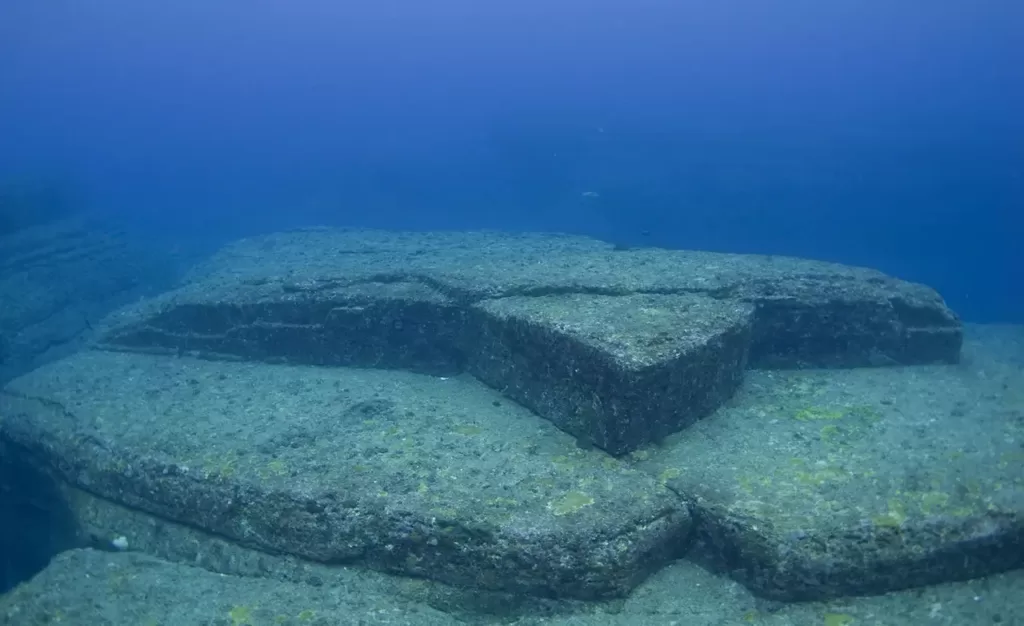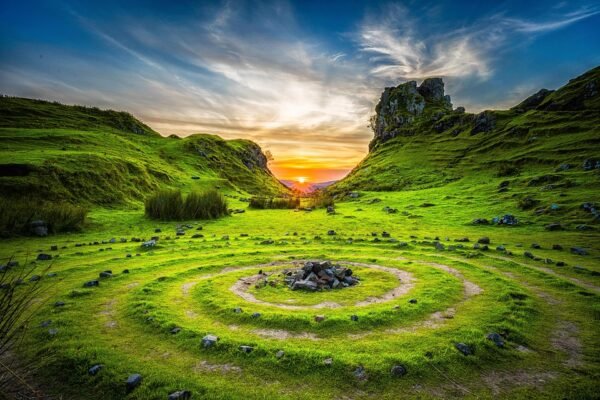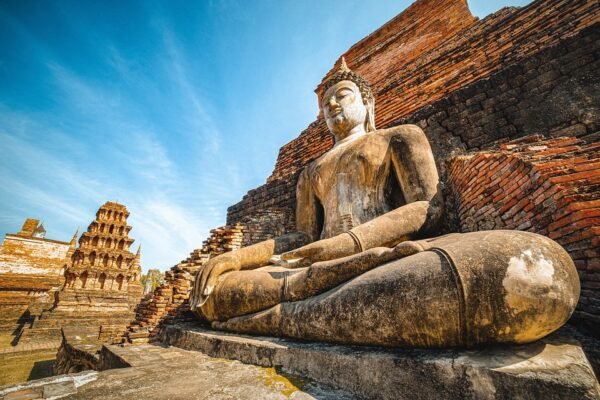

Discovered Ancient Japanese Underwater Pyramid – Retro Timeline
Beneath the mysterious depths of the ocean lie astonishing discoveries waiting to be unraveled. One such discovery is the Japanese underwater pyramid, a testament to the enduring mysteries of our planet’s history. This submerged structure, located off the coast of Yonaguni Jima, has sparked intense debates among scientists and explorers. Is it a natural creation shaped by the forces of nature, or does it hold the secrets of an ancient civilization lost to time?
The Japanese underwater pyramid was first discovered in 1986 by a local diver. Rising from a depth of 25 meters, the largest structure resembles a monolithic, stepped pyramid, captivating the imagination of those who encounter it. Over the years, researchers like Masaaki Kimura, a marine geologist, have dedicated themselves to studying and mapping the formations at this site. Kimura believes that the structures are remnants of an ancient city submerged around 2,000 years ago, akin to an Atlantis of Japan. His findings point to evidence of human influence, such as quarry marks, carved faces with rudimentary characters, and rocks sculpted into animal likenesses.
However, not everyone is convinced of the artificial nature of these formations. Robert Schoch, a professor at Boston University, argues that the features are natural and a result of geological processes. The Japanese government agencies responsible for cultural affairs and Okinawa Prefecture also do not recognize the remains as significant cultural properties.
The debate between natural and man-made origins of the Japanese underwater pyramid continues to intrigue researchers and enthusiasts alike. Proponents of the artificial origin theory highlight evidence such as quarry marks, carvings, sculpted rocks, and intricate structures like temples and roads. These findings suggest advanced urban planning and a civilization with remarkable craftsmanship.
Critics of the artificial origin theory point to geological processes, underwater erosion, and the lack of direct evidence of human involvement as reasons to consider the structures as natural formations. The presence of stalactites with dates aligning with the city’s submersion and charcoal dating to approximately 1,600 years ago provide clues about the age of the structures and possible human activity.
The potential link between the structures and the last Ice Age adds another layer of complexity to the mystery. As sea levels were lower during this period, connecting Yonaguni to neighboring regions, any construction or modification of the monument likely occurred during this time.
The ongoing exploration and research into the Japanese underwater pyramid offer valuable insights into our planet’s geological history. Whether natural or man-made, these structures hold the key to unlocking hidden secrets beneath the waves of Yonaguni Jima. As science continues to evolve with new technologies and research methods, we may one day decipher the enigma that lies beneath the ocean’s depths.







